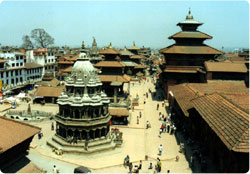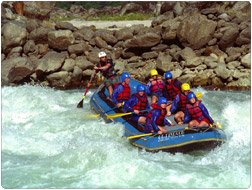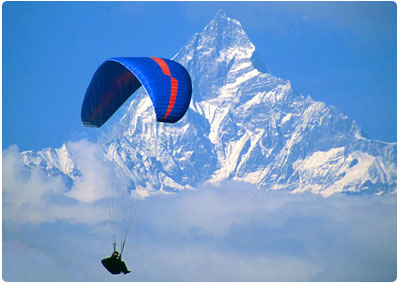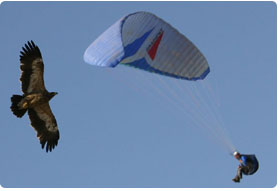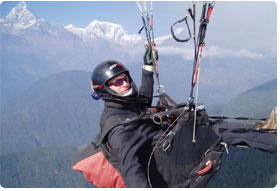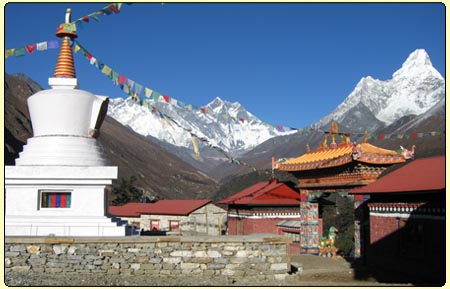Area: 932 sq. km.
Established: 1973
LOCATION:
Royal Chitwan National Park, the oldest national park in Nepal, is situated in the subtropical inner Terai lowlands of South-Central Nepal. The park was designated as a World Heritage Site in 1984.
The park covers a pristine area with a unique ecosystem of significant value to the world. It contains the Churiya hills, ox-bow lakes and flood plains of Rapti, Reu, and Narayani Rivers. Approximately 70% of the park vegetation is sal forest. The remaining vegetation types include grassland (20%), riverine forest (7%), and sal with chirpine (3%), the latter occurring at the top of the Churiya range. The riverine forests consist mainly of khair, sissoo and simal. The grasslands form a diverse and complex community with over 50 species. The Saccharum species, often called elephant grass, can reach 8 m. in height. The shorter grasses such as Imperata are useful for thatch roofs.
There are more than 43 species of mammals, over 450 species of birds, and more than 45 species of amphibians and reptiles in the park.
Formerly, the Chitwan Valley was well known for big game hunting and until 1950 was exclusively managed as a hunting reserve for the Rana Prime Ministers and their guests. In 1963, the area south of the Rapti River was demarcated as a rhinoceros sanctuary. In 1970, His late Majesty King Mahendra approved, in principle, the creation of Royal Chitwan National Park.
PHYSICAL FEATURES
Within the park lie the Churia hills, ox-bow lakes, and the flood plains of Rapti, Reu and Narayani Rivers. The Churia hills rise gradually towards the east from 150m. to over 800m. elevation. The lower but more rugged Someshwor hills occupy most of the western portion of the park. The flood plains of Chitwan contain rich alluvial soils. The park boundaries have been delineated by the Narayani and Rapti Rivers in the north and west, and the Reu river and Someshwor hills in the south and south-west. It shares its eastern border with the Parsa Wildlife Reserve.
SEASONS
The park is influenced by a tropical monsoon climate with relatively high humidity. Winter, spring and monsoon are the three main seasons. The cool winter season occurs from October to February. Spring begins in March and is soon followed summer that ends in early June. Summer days are typically hot with up to an average 30C daytime temperature. The monsoon usually begins at the end of June and continues until September. The mean annual rainfall is about 21-50 mm. and during this time of the year rivers are flooded and most of the roads are virtually impassable.
VEGETATION
The Chitwan Valley is characterized by tropical to sub-tropical forest. Roughly 70% of park vegetative cover is sal (shorea robusta) forest, a moist deciduous vegetation type of the Terai region. The remaining vegetation types include: grassland (20%), riverine forest (70%), and sal with chirpine (pinus roxburghii) (3%) forest, the latter occurring at the tops of the Churia range. The riverine forests consist mainly of khair, sissoo, and simal. The simal has a spiny bark when young and develops buttresses at the bottom in older stages. The grasslands form a diverse and complex community with over 50 species.
ANIMALS
There are more than 43 species of mammals in the park. The park is especially renowned for its protection of the endangered one- horned rhinoceros, tiger, and gharial crocodile along with many other common species of wild animal. The estimated population of rhinos is 400. The park also secures populations of endangered species such as gaur, wild elephant, four horned antelope, striped hyena, pangolin, Gangetic dolphin, monitor lizard, and python.
Some of the other animals found in the park are sambar, chital, hog deer, barking deer, sloth deer, common leopard, ratel, palm civet, wild dog, langur and rhesus monkeys.
There are over 450 species of birds in the park. Among the endangered birds are the Bengal florican, giant hornbill, lesser florican, black stork and white stork. A few of the common birds seen are peafowl, red jungle fowl, and different species of egrets, herons, kingfishers, flycatchers and woodpeckers. The best times for bird watching are in March and December.
More than 45 species of amphibians and reptiles are found in the park, some of which are the
marsh mugger crocodile, cobra, green pit viper and various species of frogs and tortoises. The park is actively engaged in the scientific study of several species of wild flora and fauna.
From: http://www.south-asia.com/showcase/Tour/chit.html


